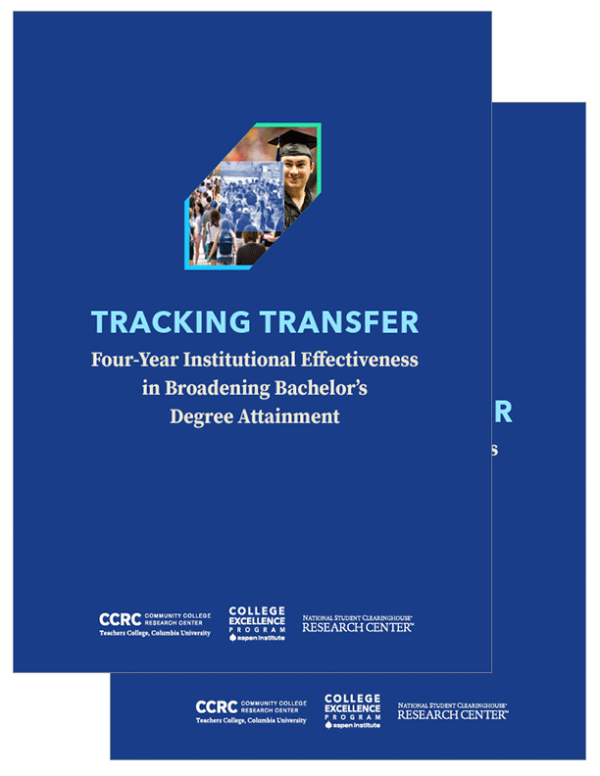
Despite surveys indicating that nearly 80% of community college students aspire to earn a bachelor’s degree, only about a third transfer to a four-year institution, and fewer than half of those who do transfer go on to earn a bachelor’s degree within six years of community college entry. This set of two reports—one focused on community colleges and the other on four-year institutions—analyzes student data from the National Student Clearinghouse to measure the performance of community colleges and four-year institutions in enabling students who started at a community college as part of the fall 2015 cohort to transfer and earn a bachelor’s degree. The reports, authored by researchers at CCRC and the Aspen Institute, serve as a call to action to improve ineffective and inefficient transfer pathways in higher education. They also provide metrics that institution and state system leaders can use to benchmark their performance and evaluate efforts to improve student outcomes.
The study is the first of its kind to report state-by-state transfer rates and outcomes by student subgroup, finding that low-income (11%), older (6%), Black (9%), and Hispanic (13%) students transfer and complete bachelor’s degrees at even lower rates than community college students overall (16%). It finds only modest progress in transfer performance over the past seven years—a prior report released by CCRC and Aspen in 2016 found a cohort bachelor’s completion rate of 14%. Each report offers a state-by-state breakdown of transfer outcomes:
- States with the largest share of community college students who are low-income, Black, or older have bachelor’s completion rates for these students well below the national average for all students.
- States with the greatest improvement in transfer and bachelor’s degree attainment include North Carolina, West Virginia, New Mexico, and South Dakota
- Transfer outcomes have stagnated or show little improvement in most states.
An online dashboard provides complete state-by-state data.
The reports also identify strategies for community college leaders, four-year institution leaders, and state policymakers to consider for improving transfer practices and bachelor’s degree attainment rates, including:
- Expanding dual enrollment opportunities as an on-ramp to transfer and bachelor’s completion, particularly for low-income, Black, Hispanic, and other groups that are underrepresented in dual enrollment but benefit from the strong positive correlation between dual enrollment participation and transfer/bachelor’s attainment;
- Heightening focus on timely bachelor’s completion after transferring from community college to reduce cost and accelerate entry into a job after graduating;
- Promoting associate degree completion prior to transfer, consistent with the report’s finding of a strong positive correlation with bachelor’s degree attainment;
- Increasing the number of transfers to selective public and pivate four-year institutions by encouraging more selective institutions to expand access to community college transfers;
- Discouraging transfer to for-profit institutions and primarily online institutions where bachelor’s attainment rates after transfer are lowest;
- Learning about effective institutional transfer practices from Asian American and Native American Pacific Islander-Serving Institutions, Hispanic Serving Institutions, and other institutions that outperform national averages without disparities for underserved groups.
The community college report was revised in August 2025 to correct an error in the source dataset in which the sample of community college entrants with prior dual enrollment experience mistakenly included other students who were not first-time entrants at the college. Corrections concerning first-time students with prior dual enrollment experience have been made to have been made to Figure 1, Figures 16–19, and Table 1, along with related text on pp. 3, 7, 38, 39, 42, and 45. The report’s main findings and their implications remain unchanged.
